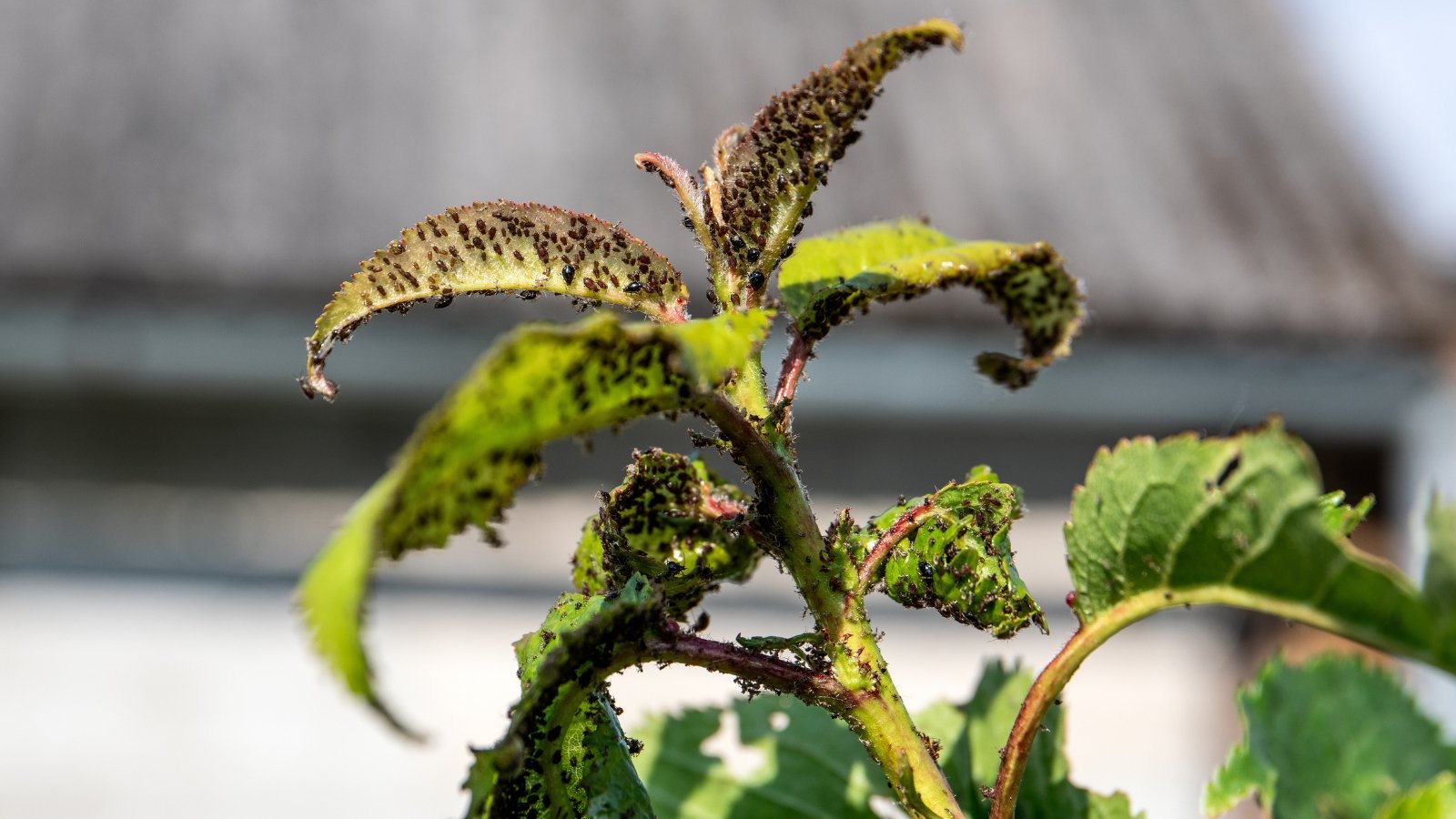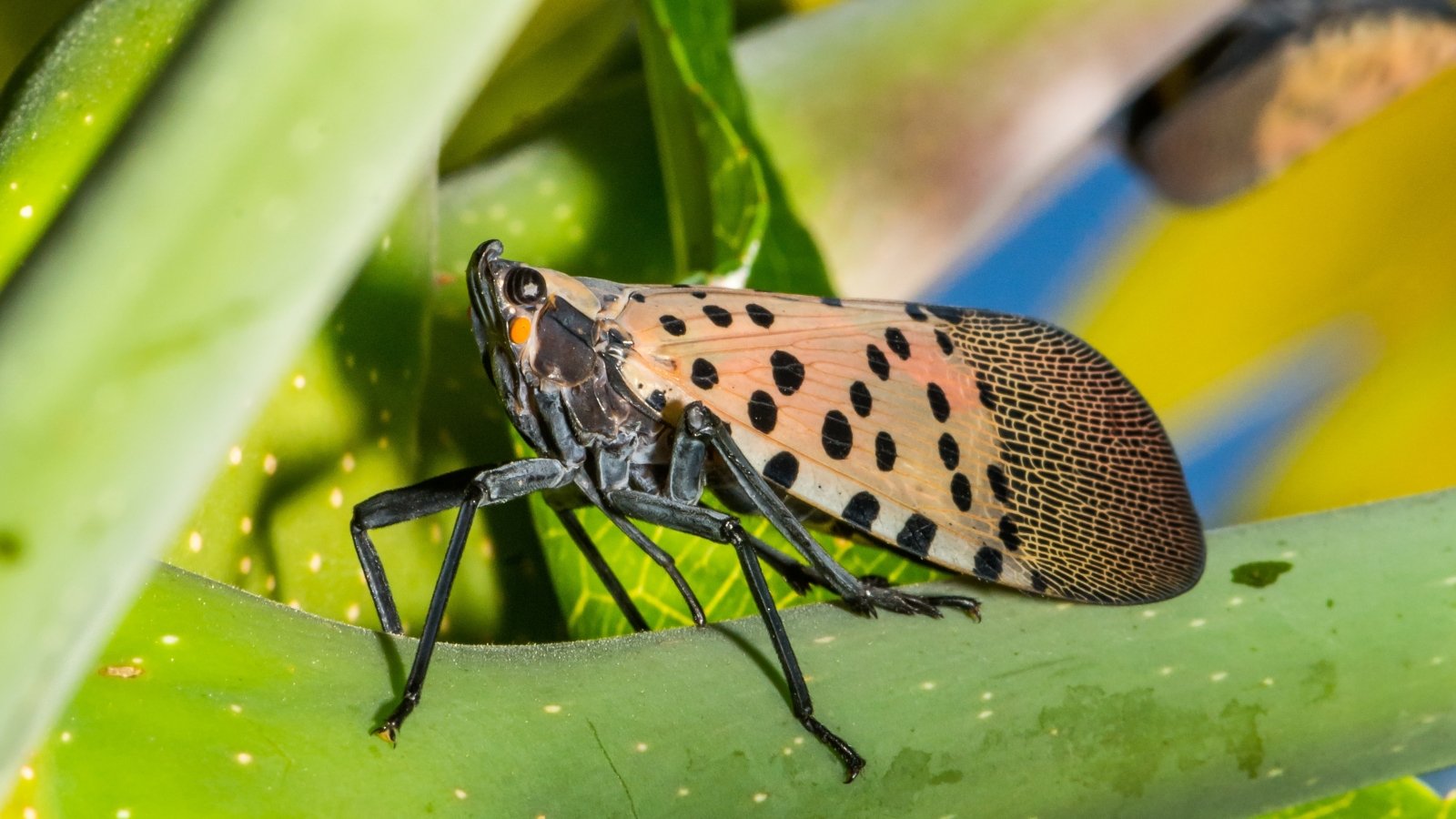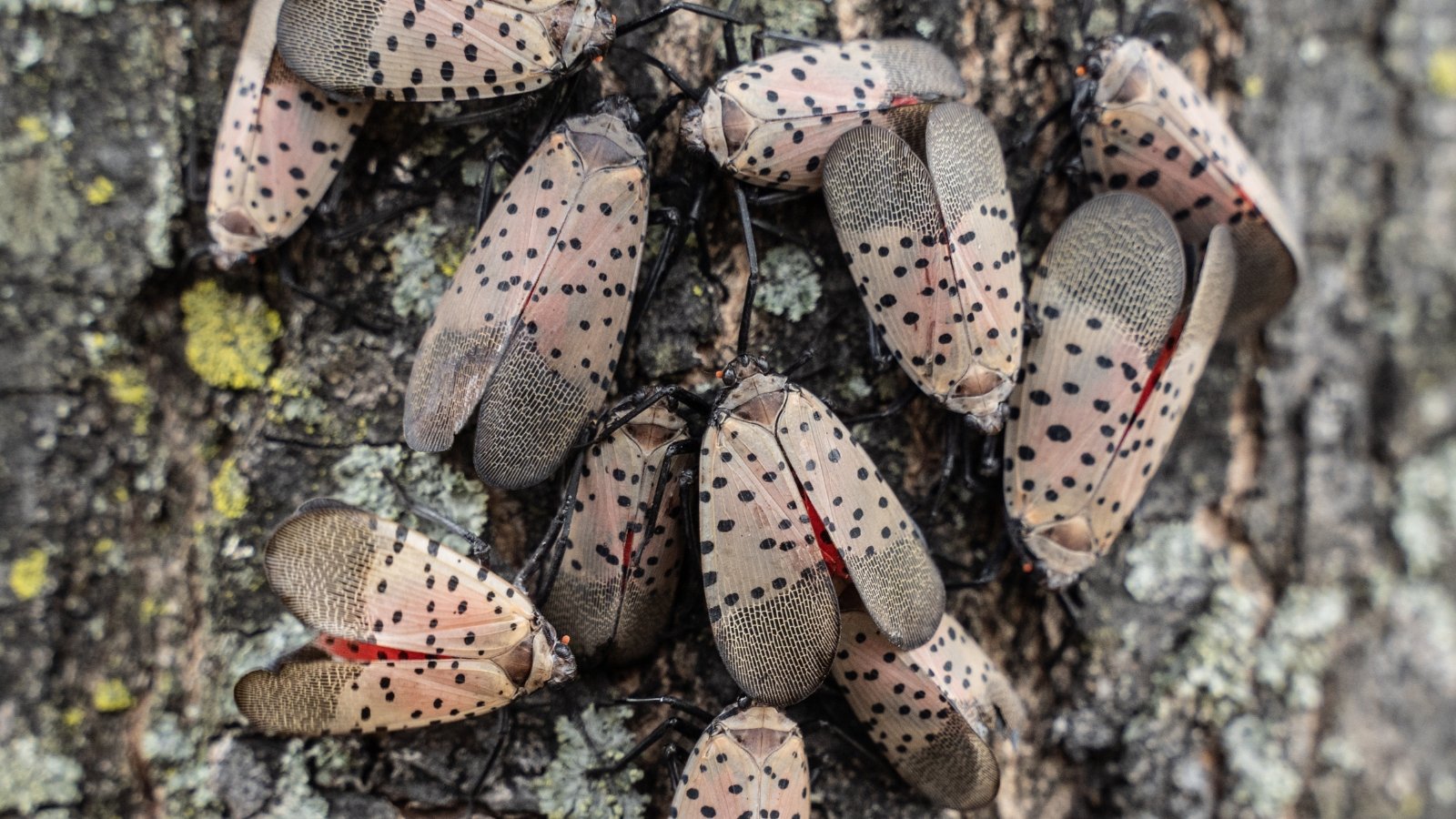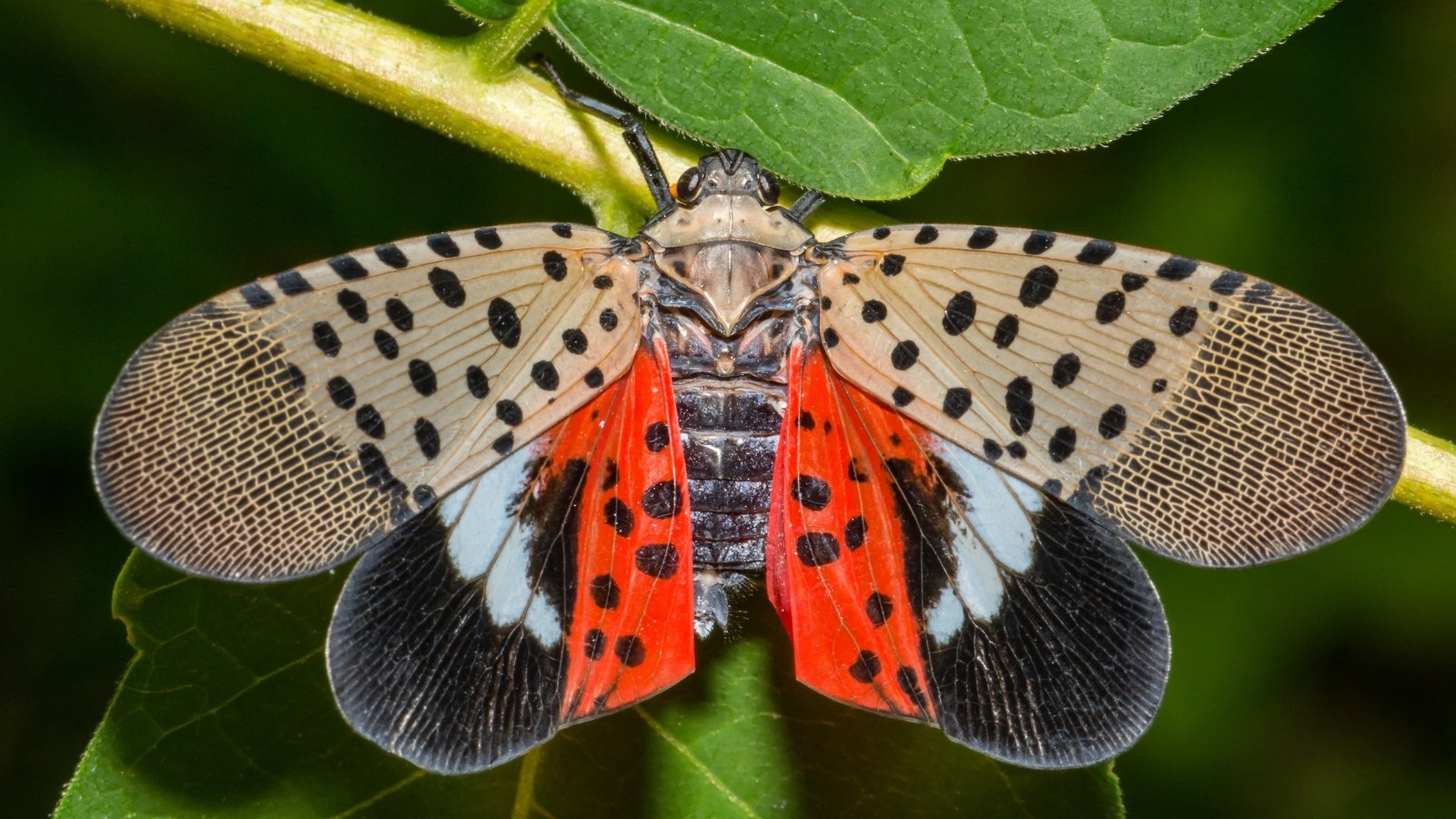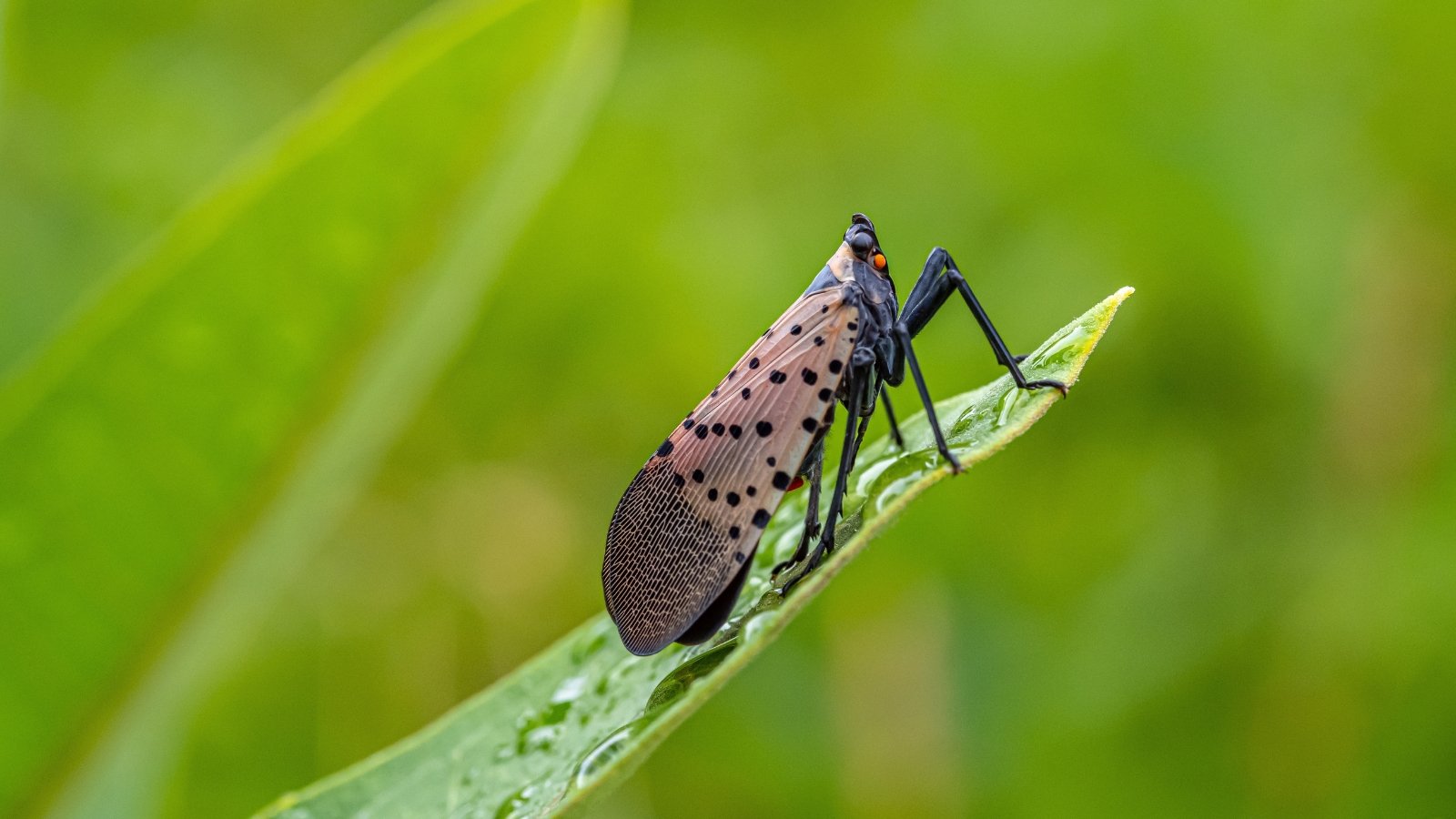[ad_1]
Pests assault weak bean crops after they’re hungry. A healthful, biodiverse yard protects itself from these bugs. When gardens are rich with crops and animals, pest predators, fungi, and micro organism work to bolster your crops’ sickness and pest resistance.
Together with compost, avoiding chemical sprays, and using pure gardening methods are three easy strategies to enhance biodiversity. Together with new perennial and annual species moreover helps—additional crops provide additional flowers, inviting insect predators like ladybugs, wasps, and pirate bugs. It moreover helps to plant many varieties of beans to increase vary and resilience on the genetic stage.
Prevention is the proper methodology for holding sap-sucking bugs out of your yard. They’ll shortly eat your crops and multiply as quickly as they uncover their means onto your beans. These pure elimination strategies will banish them in order that they don’t return, holding your harvest safe.
We’ll cowl straightforward strategies to set up each pest sooner than discovering the proper prevention and elimination methods. With out extra ado, these are seven widespread bean pests to seek for this season.
Bean Leaf Beetle
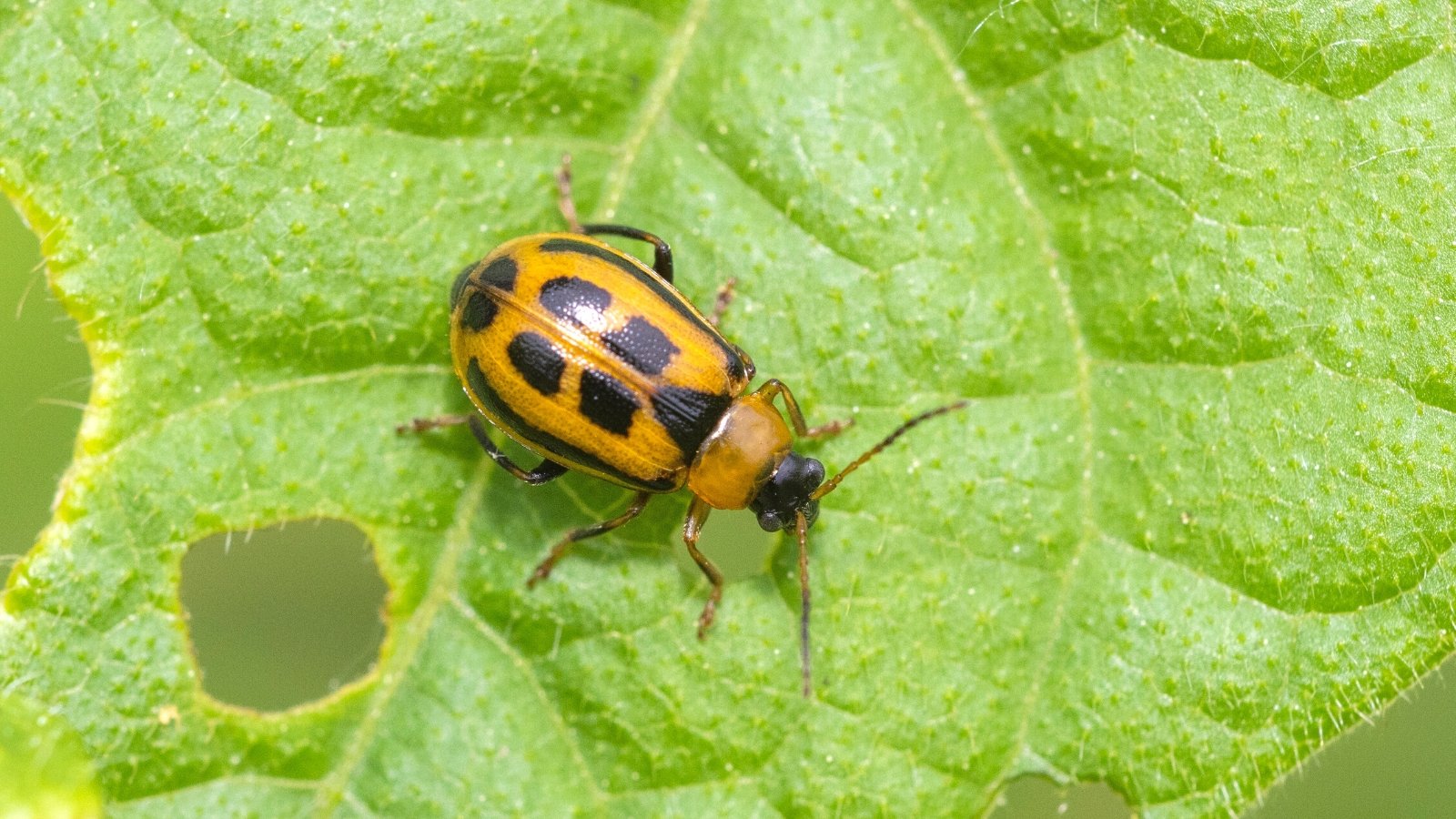

Bean leaf beetles get their names from being voracious leaf eaters. They’re most damaging as adults. The beetles eat youthful plant and pod tissue, eradicating new progress sooner than they sort flowers and beans. They’re most common throughout the southeastern U.S. in clay soils from spring to summer season season.
The larvae aren’t as damaging, although they will eat tender roots whereas they sort. These leaf beetles are main vectors of bean pod mottle and mosaic viruses that kill beans. Preserve these beetles away, and in addition you’ll maintain these illnesses out of your yard.
Bean leaf beetle adults are smaller than 1 / 4 inch prolonged, with diverse patterns and colors on their backs. Most have black spots on yellow-reddish to brown-colored wing covers. They’ve a black triangle below their head that distinguishes them from totally different patterned beetles. The larvae seem like small white worms with brown ends. You acquired’t see them above flooring. They’ve six temporary legs on their entrance end.
This pest thrives beneath warmth temperatures and is relatively dormant all through fall and early spring. Develop early maturing bean varieties all through these seasons for damage-free leaves and pods. Late plantings are moreover a deterrent, as any overwintered beetles switch on sooner than beans begin rising. Bean leaf beetles overwinter in plant residue, so eradicating leftover crops in autumn retains them from returning in spring.
Kick these beetles out of your yard by spraying them with sturdy streams of water from a hose or handheld sprayer. Repeatedly knock them off your crops until their populations decline. The wasp Pediobius foveolatus is a predatory insect that eats them, working onerous so that you just don’t must. They’ll assault larvae and pupa, killing the beetles sooner than they will damage your crops.
Mexican Bean Beetle
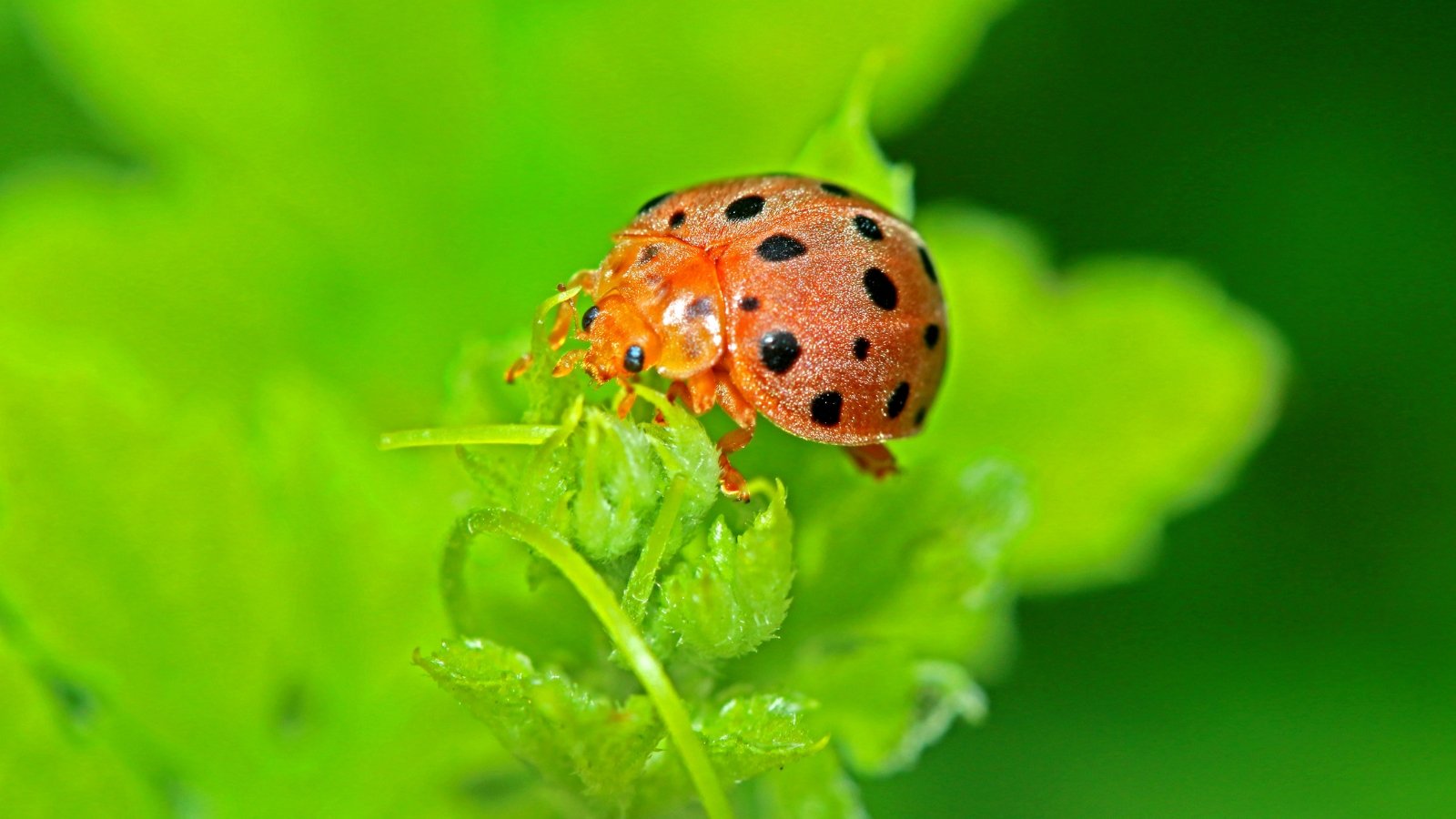

Mexican bean beetles behave equally to bean leaf beetles, and prevention and elimination strategies for the two are associated. These beetles are additional aggressive, creating three to 4 generations in a single rising season!
Frequent all by the U.S. apart from on the West Coast, Mexican bean beetles are a necessary pest that damages agricultural and yard crops. Use prevention strategies yearly to keep up them at bay, and encourage pure predatory bugs to come back again by bolstering your yard’s biodiversity.
Mexican bean beetles are larger than bean leaf beetles, spanning from two to three-eighths of an inch prolonged. They resemble ladybugs nevertheless with a darkish orange shade. Their black spots sort three symmetrical rows all through their wing covers.
Preserve these beetles out of your yard by planting resilient bean varieties like ‘Wade,’ ‘Logan,’ and ‘Black Valentine.’ Early maturing varieties moreover mature pest-free, as a result of the beans sort sooner than the beetles rise up in spring. Develop this crop throughout the fall with early maturing varieties for an extra, pest-free harvest. On the season’s end, take away bean plant residue out of your yard to cease beetles from overwintering.
As quickly as they arrange themselves these beetles are powerful to remove. They lay orange-yellow eggs in clusters on leaf undersides, which you will smush, wash, or prune off. The predatory wasp Pediobius foveolatus assaults beetle larvae, providing an extra layer of safety. In case you see various larvae and adults in your beans, hose them off with sturdy streams of water every day.
Yard Fleahopper
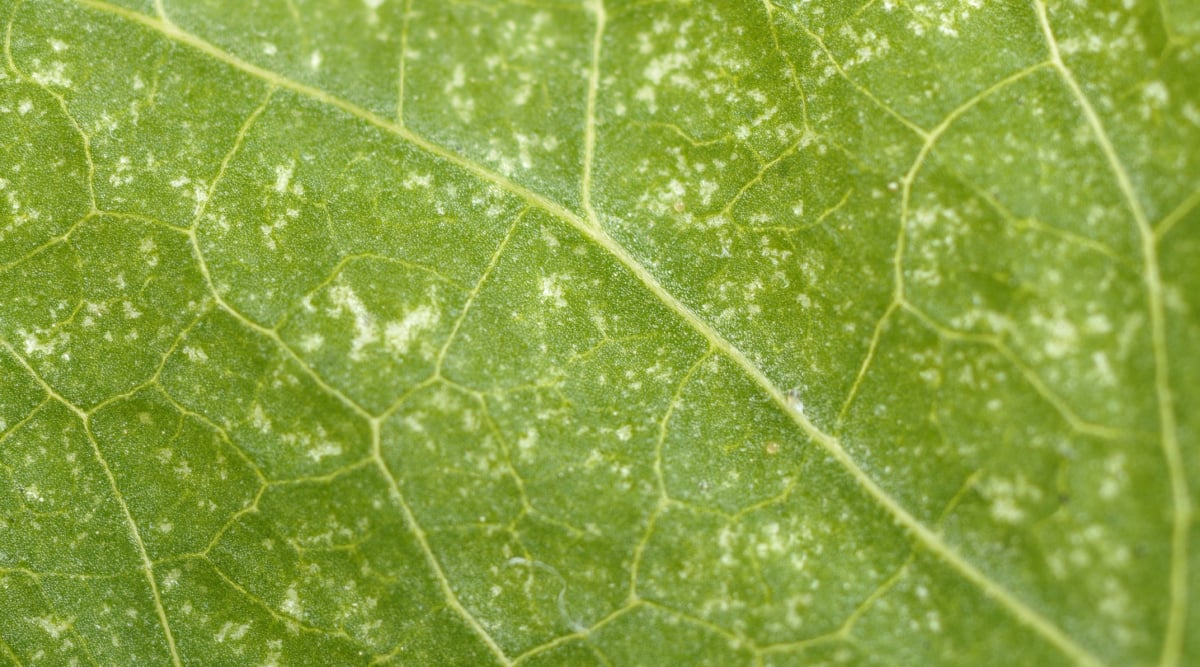

Yard fleahoppers are native insect pests that thrive throughout the jap U.S. up by means of Canada. Although they’re a neighborhood species, they set off necessary harm to foliage all by the good and comfortable months. They hop away on the primary sight of hazard, giving them their title “fleahopper.”
Large populations suck sap from bean leaves, weakening whole crops. The weak leaves lastly wither and die, decreasing how loads photosynthesis your beans can perform. Fortuitously, yard fleahoppers are native bugs, which suggests they’ve a great deal of widespread predators that hunt them. Invite them to your yard with wildflowers, shrubs, and flowering timber.
Yard fleahoppers are tiny black hopping bugs. The male hoppers are slender and thin, whereas the females are enormous with temporary or prolonged wings. They each have elongated hind legs that give them a elevate after they soar. The nymphs, or youthful adults, resemble adults nevertheless are inexperienced or yellow. Grownup fleahoppers under no circumstances develop larger than a sixteenth of an inch prolonged.
Many North American parasitic wasps prey on yard fleahoppers. In case you see wasps in your yard, don’t harm them! They will not sting, and you might encourage them to stay with plantings, or depart them be. Further discourage fleahoppers by rising sturdy, healthful crops with thick layers of compost over their roots. These prevention strategies moreover work for a similar pest, the potato leafhopper.
In case you see yard fleahoppers, it’s most interesting to depart them be besides they’re excessively harming your crops. Spraying pesticides harms parasitic wasps that prey on these pests. In case it is best to spray, use an pure one like neem oil, water, and insecticidal cleansing cleaning soap. Apply it throughout the morning or afternoon whereas pollinators are dormant. A light-weight-weight mist is a lot.
Aphid


Aphids assault most ornamental species and our beneficial crops! They’re small, soft-bodied bugs with piercing mouth parts. A single aphid isn’t a difficulty, nevertheless tons of of them are. They shortly reproduce when fully glad because of youthful aphids hatch with ready embryos that supply only a few days later. They create two generations for the worth of 1!
Aphids harm your legume crops by consuming leaves, stems, and flower buds. Likelihood is you will uncover various ants spherical infestations, as they farm these pests to reap the nectar-like excretions they make.
Many aphid species exist with fully totally different colors and markings. Most are spherical an eighth of an inch prolonged with almond-shaped fleshy our our bodies. Bean aphids are black bodied bugs. They’re often squishy. In heavy infestations, you’ll uncover winged, small aphids and wingless wide-bodied ones. They generally tend to congregate on bean leaf stems and leaf undersides. Seek for congregations of black bugs when scouting for bean aphids.
Cease aphids by planting various quite a few plant species. They’ll cowl the soil and shield moisture whereas their flowers invite pollinators and predatory bugs to the situation. Fixed water moisture retains your crops turgid and highly effective, stopping aphids from puncturing them. Apply thick layers of compost yearly and in addition you’ll extra bolster bean defenses. Don’t overfertilize. It’s going to enhance plant sugars, attracting aphids.
Take away aphids with the sturdy hose stream trick. Merely spray water on them until they fall off your beans. With every day sprayings, aphid populations shortly decline and disappear. Ladybugs, wasps, and lacewings are their pure predators, so improve your yard’s biodiversity to ask additional of them in.
Corn Earworm
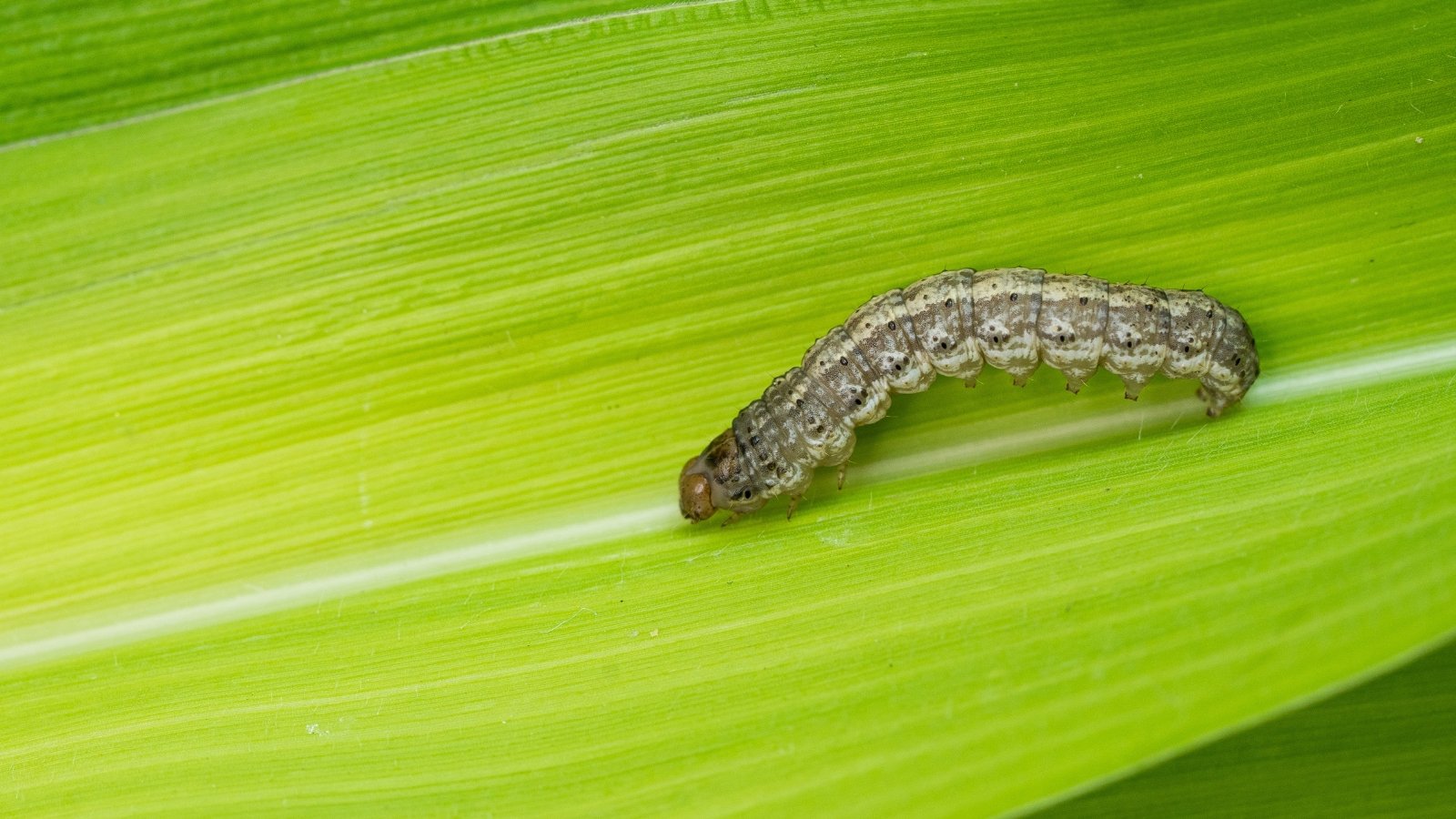

Corn earworms are nasty little larvae that tunnel into youthful bean pods. They keep in them, damaging beans by consuming them and excreting waste into the pods. You’ll uncover small tunneling holes in your bean pods which have black or brown excrement coming out of them.
Corn earworms are moreover often called tomato fruitworm because of they assault totally different crops like corn, peppers, and eggplant. You’ll uncover the larvae and brown moths fluttering spherical crops at night from midsummer onwards.
Corn earworms are worm-like larvae with segments, and they also fluctuate in shade counting on their current life cycle stage. Youthful earworms are delicate yellow or brown, maturing to a creamy yellow-green shade. Mature larvae are brown or black with a single darkish line down their backside. Grownup moths are fuzzy and light-weight brown with a wingspan between one to 1 and a half inches prolonged.
Cease corn earworm adults from laying eggs by inserting row cowl or mesh linings over your beans at night. If eggs hatch this yr and in addition you uncover damaged bean pods, eliminate them away out of your yard. Cease overwintering earworms by chopping bean crops at their base and eradicating them out of your yard beds on the rising season’s end.
Take away corn earworms by chopping off contaminated pods, leaves, and stems. Take away as many larvae as doable to cease them from returning subsequent yr, then add mesh liners over your beans at night. Bt is one different environment friendly administration, significantly in a giant infestation. These three strategies will take away earworms out of your yard and forestall them from spreading extra.
Brown Marmorated Stink Bug
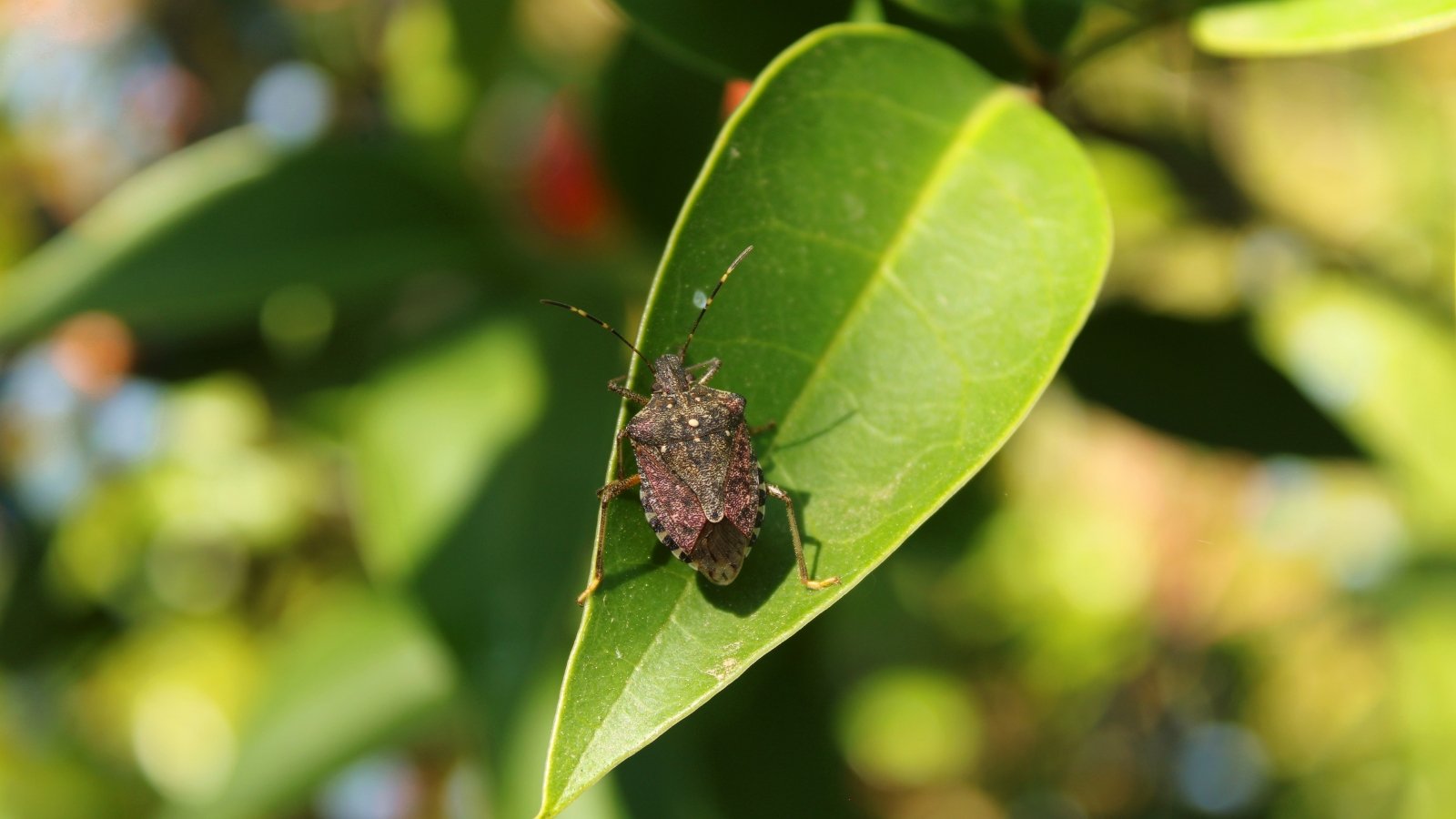

Some stink bugs are native to North America, whereas totally different pests identical to the brown marmorated stink bug are invasive species from worldwide continents. Some overwinter in nooks and crannies in attics, basements, and crawlspaces all by U.S. homes. They emerge from late spring by means of summer season season, laying eggs and consuming leaves, fruits, and flowers.
Get down and dirty alongside together with your beans to remove these pests. They require some handbook choosing to remove, nevertheless you’ll have help from native birds that feast on these juicy bugs. Marmorated stink bugs switch from plant to plant, so that you just’ll want to cut back their populations sooner than they unfold all by your yard.
All stink bugs have shield-shaped our our bodies with two antennae protruding of their lance-shaped heads. Some are slender, identical to the leaffooted stink bugs, whereas others identical to the brown marmorated stink bug are enormous and rectangular. They sort clusters, so it is attainable you will uncover a number of in your bean pods and leaves.
Cease stink bug infestations by promoting biodiversity all by your yard. The additional wildflowers, timber, and shrubs you develop, the additional areas exist for birds, mammals, and bugs to remain. Birds love consuming stink bugs, and they also’ll take away adults out of your beans as they see them. Stay away from spraying synthetic pesticides on them to avoid harming hungry songbirds. A plant protector, like a shade material or frost material is an efficient deterrent nevertheless blocks fowl entry to the bugs.
If infestations develop uncontrolled, some straightforward handbook methods take away them shortly. Seize a bucket and fill it with cleansing cleaning soap and water. Then, scour over your crops trying to find grownup stink bugs and their inexperienced, spherical eggs. Smush the eggs; they’ll be on leaf undersides, stems, and forming pods. Take grownup stink bugs and throw them throughout the soapy water. With every day pickings, the pests will disappear inside one to 2 weeks.
Cowpea Curculio
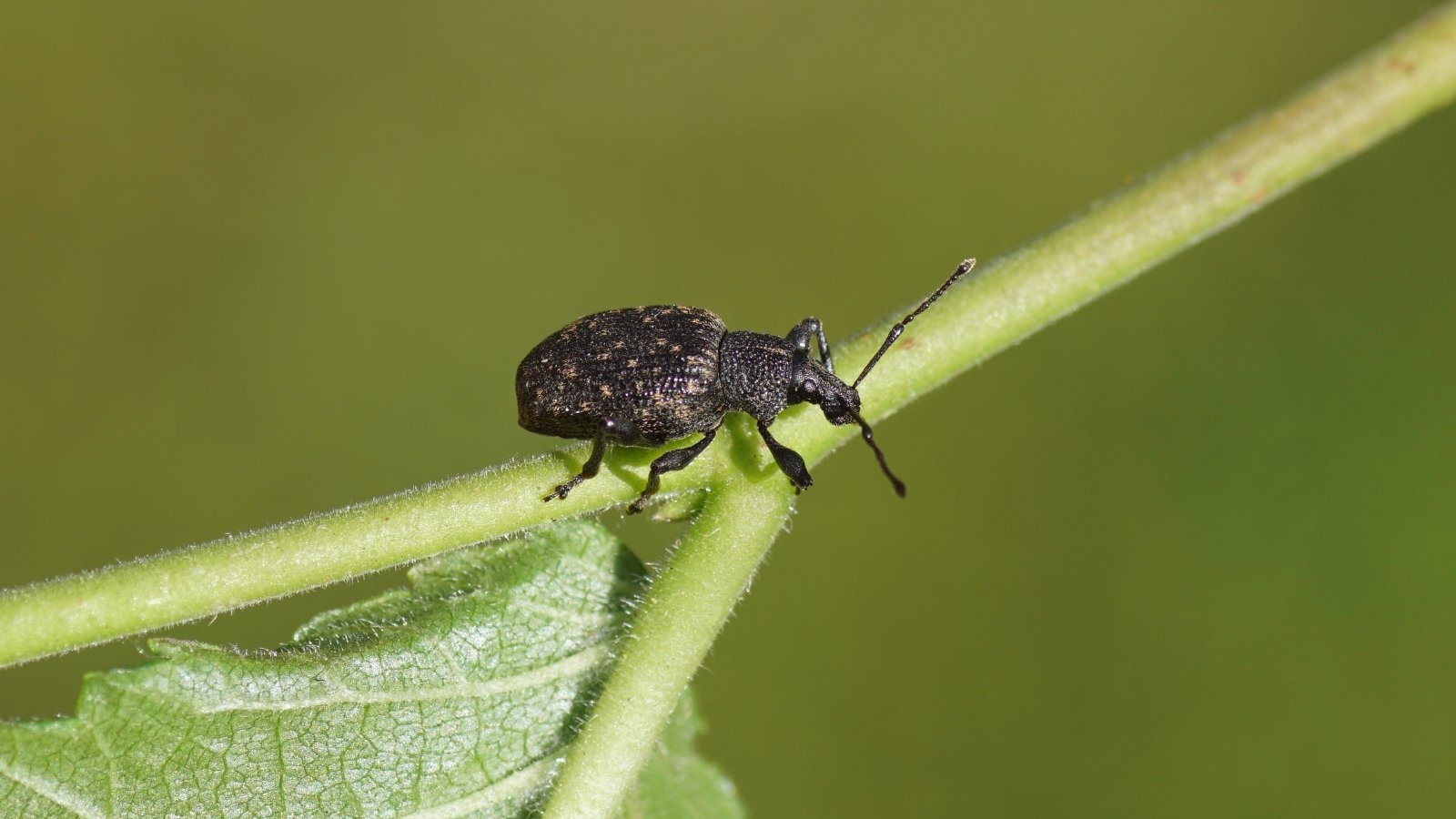

A typical pest of the southern U.S., cowpea curculio bugs assault beans, peas, strawberries, and totally different crops. They depart eggs on the insides of bean pods, which then hatch into small grubs. The worm-like grubs eat the maturing peas or beans sooner than exiting into the soil. They pupate and hatch as grownup beetles, who repeat the tactic one other time.
Cowpea curculios threaten maturing harvests from midsummer by means of fall. Cease adults from hatching eggs, and in addition you’ll defend your tender pods. Deal with infestations as you see them since mature beetles can overwinter in rubbish piles, crop refuse, and totally different protected web sites.
Cowpea curculio beetles have dome-shaped our our bodies with dimpled copper spots. Their grubs are tiny, white worms with two jaws on their entrance end. You’ll uncover beetles on leaves, stems, and pods, whereas larvae keep largely inside light bean and pea seeds. Their eggs are translucent after adults lay them. They mature to a whitish shade sooner than hatching.
Banish cowpea curculios with tidy gardening practices, and by inviting wild birds or chickens to the rising website online. Birds eat beetles as they appear, stopping them from laying eggs inside your tender bean pods. At season’s end, take away all bean plant residue and throw it in a scorching compost pile to destroy any overwintering adults. Rotate legume crops to ensure lower populations subsequent season.
Cowpea curculios want to play lifeless, dropping below the stalks everytime you disturb them. Put a bucket or cardboard subject below your beans, then shake them so the beetles fall below. As quickly as they’re throughout the subject, throw them in a bucket of soapy water to kill them. Take away any pods with noticeable harm to cease the larvae from hatching into the soil.
Key Takeaways
- Biodiversity, compost, and native animal populations cease pests from establishing themselves. Use additional quite a few plant species in your yard, and add compost yearly to bolster crop defenses.
- Pests are meals for insect predators—be careful for synthetic pesticides that can harm totally different animals extra alongside the meals chain.
- Plant pest-resistant varieties in early spring or fall to avoid most pests’ energetic life cycles.
- In case it is best to use a chemical spray, use an pure one like neem oil or insecticidal cleansing cleaning soap. They aren’t as harmful as synthetic pesticides.
[ad_2]
